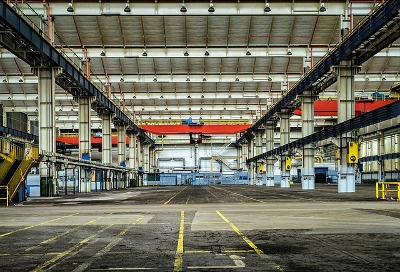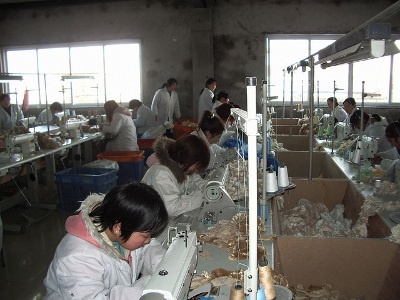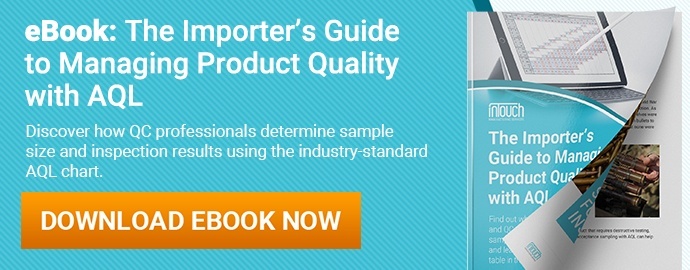Each Sunday, we publish a list of top articles and other content related to manufacturing in areas like quality control, product development, supply chain management, sourcing, auditing and law.
1. Importers covertly manufacturing in China
 Imagine you have a huge competitive advantage in your home market. Your margins have never been so healthy and everything seems promising…that is, until your competitor comes out with an item virtually identical to your own.
Imagine you have a huge competitive advantage in your home market. Your margins have never been so healthy and everything seems promising…that is, until your competitor comes out with an item virtually identical to your own.
You later discover that your competitor was able to use import records to determine where you manufacture your product. While you might have a good relationship with your supplier, no reasonable supplier is going to refuse more business. So your competitor is now making a nearly identical product from the same factory that’s supplying you.
Secrecy is sometimes a great boon in business because it protects your key assets from imitation, damage or any other general nastiness that competitors might bring about. The author of this featured article mentions how in the case of manufacturing in China, more of his clients have been asking for secrecy for three main reasons, including:
- Not wanting buyers to know that the products in question are made in China
- Not wanting competitors to know that their products are manufactured in China in the first place, let alone the exact location
- Not wanting other Chinese manufacturers to know where the products are made
In contrast to the secrecy the author mentions in this article, some companies can afford to make their supply chains not just transparent, but very transparent. A prime example is Nike’s Sustainability map, where you can look all over the world at all the factories that make Nike products.
Choosing between supply chain transparency to guarantee consumers your products are ethically made is hard to balance with secrecy. On the one hand, if your supply chain is opaque, buyers might think you have something to hide, whereas if it is crystal clear, your competitors might more easily undercut your business. Where to draw the line between secrecy and transparency is ultimately best left to each importer to decide, since they know their own circumstances best.
If you’d like some more insight on covert China manufacturing, check out the full article in the link below to discover some ways to keep your operations shrouded in mystery:
Getting Your Products Made in China on the Down Low – Dan Harris, China Law Blog
2. Lessons from the solar industry to global manufacturing
Solar power is a great example of an effort to combat climate change. Clean, renewable and plentiful, energy from the sun offers a chance to switch from fossil fuels like coal and oil. But in the case of China, what’s also plentiful when it comes to solar isn’t just the sun and panels – it’s money flowing into the solar industry.
According to this article, the Chinese government has heavily subsidized the country’s solar industry. After so much investment, Chinese solar companies are some of the biggest in the world and have considerable sway over the international market, so much so that,
A small vibration back in China can cause an avalanche in prices around the world.
These “vibrations” in China are not without consequences. The featured article of this synopsis points to several cases where hundreds of jobs were lost because of the shift in the global solar industry. Yet on the flip side, due to huge Chinese solar companies, that means solar panels are cheaper, which can aid in the fight against climate change.
It’s more than just solar
With China’s dominance of the solar sector, it’s crucial to realize a valuable lesson: if the Chinese government wants to dominate an industry, it will provide funding to make that happen.
Made in China 2025 serves as the perfect example of this concept at work. Other sophisticated products, like computer chips, robots, automobiles and more are all within the crosshairs of the Chinese government. China wants to rise up through the industrial value chain and rely less on foreign imports.
It’s hard to find fault with this objective as many nations feel this way. But how will international trade shift in the coming decades as new, government funded and seriously capable Chinese market entrants come to compete?
The answer to this question remains uncertain. The best hope to defend against fresh competitors is to innovate, like Elon Musk has done in the solar industry with his company’s Solar Roof.
If you’d like to read more about the solar industry in an international context, check out the full article in the link below:
When Solar Panels Became Job Killers – Keith Bradsher, The New York Times
3. The Uber of manufacturing
In case you’re not familiar with Uber, it’s an app that allows people with a car to act like a taxi driver. Users request a pick up on their phones and a driver comes to take them where they want to go. Essentially, the drivers get to use their car and their time to make money when they would otherwise sit idle, and the user saves money compared to a traditional cab fare.
 And it’s this same principle, known as distributed on-demand manufacturing, that’s coming to the manufacturing industry. As the featured article points out, in a host of factories in the United States, equipment “sits unused about half the time” when it could be used for production.
And it’s this same principle, known as distributed on-demand manufacturing, that’s coming to the manufacturing industry. As the featured article points out, in a host of factories in the United States, equipment “sits unused about half the time” when it could be used for production.
Not everyone can afford the capital required to make the parts they need. Milling machines, water jets, laser cutters and other equipment are typically expensive to purchase, which creates a disconnect between people and the ideas they want to make tangible. But this problem could slowly fade away with the emergence of this new manufacturing model.
Although this article mentions how the model is still in its infancy, it offers a win-win for factories and makers. Factories can see the gears on their machines turning again and makers can receive what’s necessary to make the next big product a reality.
Do you think distributed on-demand manufacturing holds any potential to disrupt the manufacturing industry? Let us know in the comments section below.
To read more about this topic, check out the full article in the link below:
An Uber Model for Manufacturing Is Ready to Upend the Industry – Ellen Sheng, Quartz
4. Intellectual property protection in…China?
China isn’t really known as a place that protects intellectual property (IP). A quick stroll through any of China’s major fake markets will reveal that all sorts of knockoff t-shirts, bags and bootleg DVDs are readily available for sale. I’ve even personally come across a few fake products myself, like “Guxxi” (instead of Gucci) and “Hugo poss” (instead of Hugo Boss) wallets. And this is just the tip of the iceberg.
These fakes are more than just a chance to get your friends and relatives some cheap gifts. They represent a major concern for businesses looking to work with China and trust its legal system. The days of China stereotyped as an IP nightmare, however, might be numbered.
Chinese brands like Oppo, Huawei, DJI and Alibaba, to name a few, are increasingly concerned about the investments made into their research. They, like many Western brands, want to protect what they’ve developed. This desire has manifested as more pressure on the government to treat IP cases seriously.
As the featured article reports,
While China continues to have significant problems of IP theft (industrial espionage, counterfeited goods and services, trademark squatting, etc.), its leadership and government agencies have made concerted efforts to propel their intellectual property systems into the 21st century…. Bottom line: China is becoming an IP powerhouse in every sense of the word.
Of course, this trend is still a work in progress. It’s essential to remain aware of the realities and myths of Chinese counterfeiting and interactions with IP. But who knows – maybe in years to come, IP will be treated as seriously in China as it is in the West.
To learn more about China and intellectual property, check out the full article in the link below:
The Surprising Rise of China as IP Powerhouse – Wayne Sobon, Tech Crunch
5. What it’s like to work in a huge Chinese factory
The life of Chinese factory workers is sometimes a mystery. Although they make a wide variety of products that are used around the world, like everything from clothes to electric grills (sometimes in “factory cities”), it’s not always possible to fully understand what day to day life is like for them.
After the summer project of one New York University graduate student, however, their lives are a little more understandable. The student, named Dejian Zeng, worked for six weeks in an iPhone factory on the outskirts of Shanghai.
Here are some of the areas covered by the interview of Zeng regarding his findings:
- The daily routine of factory workers
- The conditions of a big factory
- Whether the workers like their jobs or not
- Work hours
- What the factory is like when a new, unreleased product is being made
- Vacation policy
- The open secrets at a mega factory
- And more
In order to ethically do business, it’s important to show concern for the lives of workers. And even though not every importer uses Chinese manufacturers for their products, their treatment of workers can serve as a lesson for how to responsibly conduct international business.
Gain insight into the lives of Chinese factory workers by reading the full interview in the link below:
UNDERCOVER IN AN IPHONE FACTORY: What It's Really Like to Work in a Chinese Mega-Factory, According to a Student Who Spent 6 Weeks There – Kif Leswing, Business Insider
We’re constantly scanning the web for top manufacturing stories and news. If you’d like to submit an article for consideration for our weekly Best in Manufacturing, send us a message and let us know.







